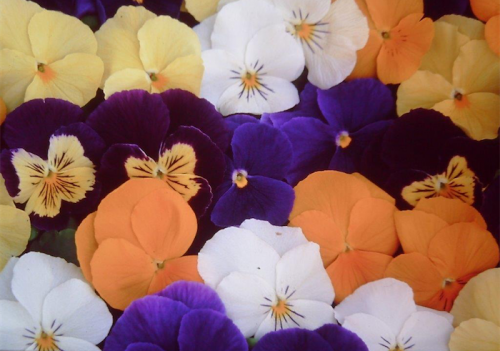
Now’s the time to plant pansies, primulas and polyanthus.
WHO ever said winter was dull? It’s a time for flowers! Just look at the three “P’s” – primula, polyanthus and pansies, plus violas and the first of the winter-flowering bulbs.

Cedric Bryant.
One of the great advantages of polyanthus and violas is their availability in individual colours to create specific planting schemes. Plus they have a long flowering period, from now throughout winter into early summer. They also make great pot plants to bring indoors and brighten the home.
Our polyanthus started flowering in March while the snails and slugs were (and still are) active, particularly after last month’s rains combined with unusually hot weather, causing an explosion of these critters, which hibernate once the frosts arrive.
A WORD of warning if you own dogs and use snail baits. The worst for pets are those with the main ingredient metaldehyde (green pellets) or methocarbamol (blue pellets). I know this from personal experience having accidentally killed our beautiful cocker spaniel as a result of using this kind of bait.
Snail bait can also kill native fauna, including blue tongue lizards and geckos.
There is a safer alternative in Multiguard’s Snail and Slug Killer, which contains no dangerous poisons, the main ingredient being a form of iron (iron EDTA) with a low toxicity, even for earthworms.
NOW is the ideal time to move shrubs that may be, through changing circumstances, growing in the wrong place in the garden.
Deciduous shurbs are best moved when they are completely dormant, ie after all the leaves have fallen. With these plants it is unnecessary to retain soil around the roots.
When moving evergreen shrubs it’s important to retain a good root ball, keeping enough soil to cover the roots. One way is to dig around and under the roots and then slide some heavy duty plastic or shadecloth under the root ball and tie it around the stem (just like wrapping a traditional Christmas pudding). Improve the new site by adding compost or some good soil from elsewhere in the garden. If the soil in the new location is heavy with clay, fill the hole with Multicore liquid Ground Breaker and allow it to soak away. It penetrates the clay deep down, unlike gypsum which remains in the same place. Replant the shrub in its new location and immediately water in with Multicrop Seaweed Plant Nutrient. This has two functions; firstly, it eliminates air pockets around the roots, which can cause fungal and other root problems; secondly, it specifically encourages new root growth.
And when moving either deciduous or evergreen shrubs, its is essential to trim cleanly any long, leggy roots or those roots damaged in the moving process.

The annual Collector Village Pumpkin Festival… one of the largest community events in the region.
Jottings…
- Plant asters or Michaelmas daisies now.
- Plant tulip bulbs now the soil has cooled.
- Look out for winter-flowering clematis such as Clematis “Wisley Cream” and C. napaulensis.
- Hellebores can still be moved now, but without delay.
The post Gardening / Winter’s the time for flowers! appeared first on Canberra CityNews.